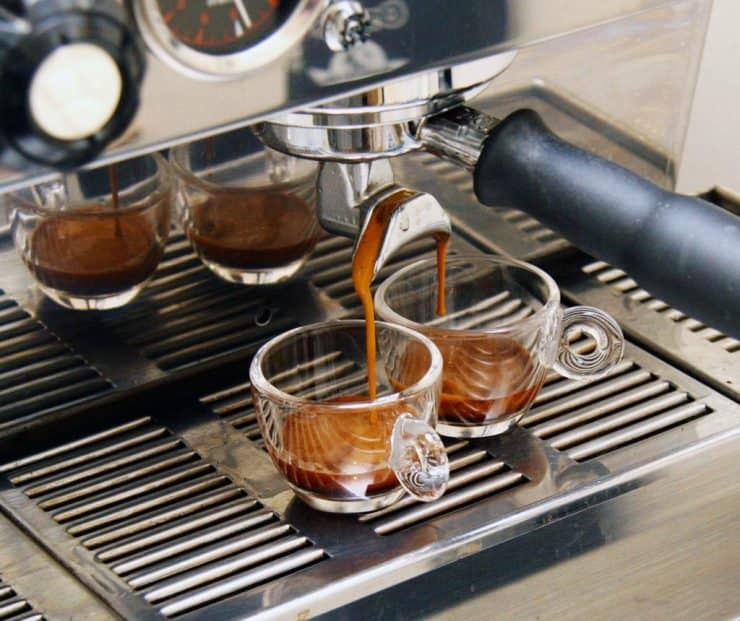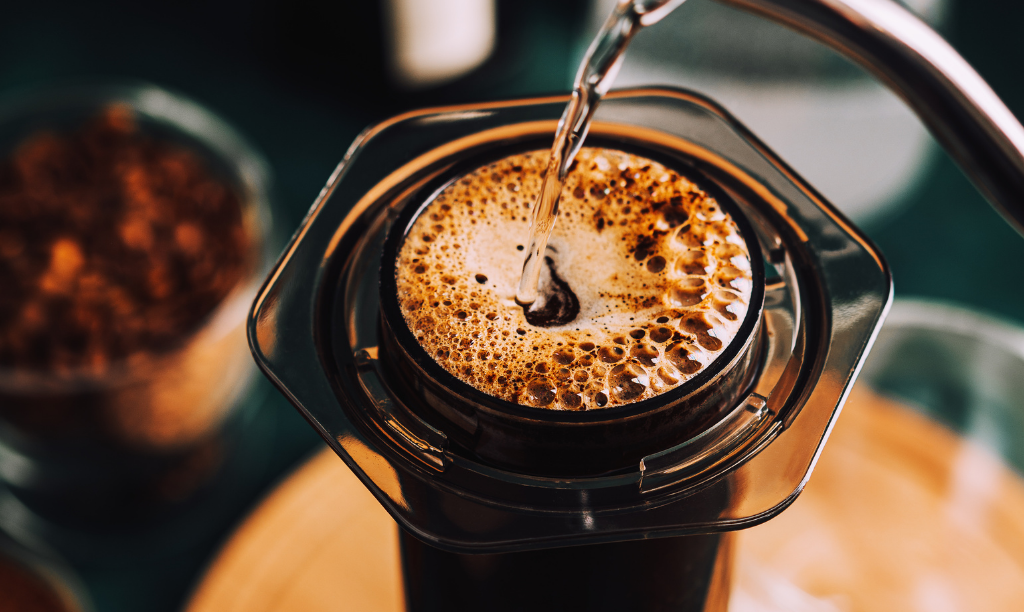The Ultimate Contrast of Popular Coffee Brewing Methods for Home Baristas
The Ultimate Contrast of Popular Coffee Brewing Methods for Home Baristas
Blog Article
Discovering the Art of Coffee Brewing: A Comprehensive Overview to Perfecting Your Cup
The art of coffee brewing is a diverse technique that combines scientific research with individual expression, where the choice of beans, water quality, and brewing techniques merge to produce a refined sensory experience. Comprehending the nuances of various coffee beans, particularly the differences in between Arabica and Robusta, is essential for any kind of fanatic.
Comprehending Coffee Beans
To genuinely appreciate the art of coffee developing, one need to initially comprehend the foundational aspect: coffee beans. These little seeds, usually derived from the Coffea plant, are crucial in determining the taste profile, aroma, and general quality of the brewed drink. Coffee beans largely come under two categories: Arabica and Robusta. Arabica beans, known for their delicate tastes and higher acidity, are usually preferred by lovers. On the other hand, Robusta beans possess a more powerful, a lot more bitter taste and higher caffeine material, making them suitable for coffee blends.

In addition, the processing method-- whether washed, all-natural, or honey-- influences the beans' last taste. Understanding these aspects permits brewers to pick the right beans that line up with their favored taste account, inevitably improving the coffee developing experience. coffee brewing methods. This comprehension is crucial for anybody desiring master the craft of brewing the best mug of coffee
Developing Approaches Clarified
Several fanatics locate that the choice of developing approach significantly influences the last taste and scent of their coffee. Each approach uses various removal methods, affecting the coffee's personality and splendor.
Drip brewing, one of the most preferred approaches, makes use of a maker to leak hot water with ground coffee, producing a consistent and clean cup. French press, on the other hand, immerses coffee grounds in hot water, allowing for a fuller body and even more durable flavor, as oils and fine fragments stay in the mixture.
Pour-over developing supplies a thorough approach, where water is manually poured over coffee grounds, permitting accurate control over extraction time and temperature, causing a intense and nuanced mug.
Coffee, a focused coffee brewed under pressure, is understood for its strong flavor and creamy texture, functioning as the base for various coffee beverages, including cappucinos and coffees.
Necessary Tools Required
The foundation of any type of effective coffee developing process exists in high quality tools tailored to your favored approach. A dependable coffee mill is vital; freshly ground beans dramatically improve flavor and scent.
Next, consider your developing device. Alternatives vary from drip coffee machine and pour-over setups to French presses and espresso makers. Each approach offers distinct taste profiles and developing techniques, so select one that straightens with your taste preferences.
An accurate scale is likewise very useful, allowing you to measure coffee and water accurately, which is important for uniformity. Furthermore, a thermostat can aid check water temperature level, as it straight affects removal top quality.
Learning Water Top Quality
The quality of water used in developing coffee plays a substantial function in figuring out the final flavor account of the mug. Different elements add to water top quality, consisting of mineral material, pH level, and overall pureness. Ideally, water ought to be without pollutants and impurities, as these can adversely influence the preference of coffee.
Minerals, such as calcium and magnesium, improve the removal of tastes from the coffee grounds, while keeping a well balanced pH level-- around 6.5 to 7.5-- is essential for optimum extraction. Water that is also soft might cause under-extraction, leading to weak or sour tastes, while go now overly tough water can create a bitter or extreme cup.
For the very best results, filtered water is advised, as it minimizes the presence of chlorine and various other undesirable materials typically found in faucet water. Additionally, consider utilizing water with a Complete Dissolved Solids (TDS) level in between 150-200 ppm, which is typically ideal for coffee brewing. By understanding water high quality, you can lay a strong foundation for attaining a consistently superb cup of coffee, enabling the unique qualities of your picked beans to shine through.

Tips for Taste Improvement
Enhancing the flavor of your coffee can substantially raise your brewing experience and highlight the one-of-a-kind subtleties of your chosen beans. To achieve this, take into consideration a number of essential factors that affect preference.
Firstly, the work dimension plays an important role. A finer work boosts extraction, causing bolder flavors, while a coarser work returns a milder cup. coffee check these guys out brewing methods. Readjust your grind according to your developing technique to achieve optimum results
Second of all, explore brew time. Over-extraction can bring about resentment, while under-extraction outcomes in a sour preference. Go for a mixture time that balances these extremes, usually between 2 to four mins, depending on your approach.
Furthermore, temperature level is an important aspect. Developing helpful resources with water that is as well hot can burn the coffee, while water that is too great may stop working to extract appropriate flavor. The suitable temperature level variety is 195 ° F to 205 ° F(90 ° C to 96 ° C)
Final Thought) )))) In final thought, the art of coffee brewing is a multifaceted practice that requires a deep understanding of various aspects, consisting of bean option, developing techniques, and water quality. Mastery of vital tools and attention to detail in work dimension, brew time, and temperature are crucial for attaining optimum extraction. By integrating these parts, coffee fanatics can raise their brewing strategies, causing a cup that not only pleases personal preferences yet likewise showcases the rich intricacy of coffee tastes.
The art of coffee brewing is a diverse discipline that merges scientific research with personal expression, where the selection of beans, water top quality, and developing techniques merge to develop a polished sensory experience.To absolutely appreciate the art of coffee developing, one should initially understand the fundamental element: coffee beans. Developing with water that is as well warm can swelter the coffee, while water that is too cool may fall short to extract appropriate taste. In verdict, the art of coffee brewing is a complex practice that calls for a deep understanding of numerous aspects, consisting of bean selection, brewing approaches, and water quality. By integrating these parts, coffee enthusiasts can elevate their developing techniques, resulting in a cup that not only satisfies individual preferences but likewise showcases the abundant intricacy of coffee flavors.
Report this page